 |
QElectroTech
0.8-dev
|
 |
QElectroTech
0.8-dev
|
The ElementsLocation class This class represents the location, the location of an element or of a category, even of a collection ... in a collection. She encapsulates a virtual path. More...
#include <elementslocation.h>

Static Public Attributes | |
| static int | MetaTypeId = qRegisterMetaType<ElementsLocation>("ElementsLocation") |
| Id of the corresponding Qt meta type. More... | |
Private Attributes | |
| QString | m_collection_path |
| QString | m_file_system_path |
| QETProject * | m_project = nullptr |
| std::stringstream | m_string_stream |
The ElementsLocation class This class represents the location, the location of an element or of a category, even of a collection ... in a collection. She encapsulates a virtual path.
| ElementsLocation::ElementsLocation | ( | ) |
ElementsLocation::ElementsLocation Constructor.
| ElementsLocation::ElementsLocation | ( | const QString & | path, |
| QETProject * | project = nullptr |
||
| ) |
ElementsLocation::ElementsLocation.
| path | : Item location path |
| project | : Project of the location of the element |

| ElementsLocation::ElementsLocation | ( | const ElementsLocation & | other | ) |
ElementsLocation::ElementsLocation The copy constructor.
| other | : Alternate item location to copy |
| ElementsLocation::ElementsLocation | ( | const QMimeData * | data | ) |
ElementsLocation::ElementLocation Constructor, build an ElementLocation from a QMimeData, the mime data format must be "application/x-qet-element-uri" or "application/x-qet-category-uri". This location can be null even if format is valid.
| data |

|
virtual |
ElementsLocation::~ElementsLocation Destructeur.
| bool ElementsLocation::addToPath | ( | const QString & | string | ) |
ElementsLocation::addToPath Add a string to the actual path of this location.
| string |


| QString ElementsLocation::baseName | ( | ) | const |

| QString ElementsLocation::collectionPath | ( | bool | protocol = true | ) | const |
ElementsLocation::collectionPath Return the path of the represented element relative to collection if protocol is true the path is prepended by the collection type (common://, custom:// or embed://) else if false, only the collection path is returned without the collection type.
| protocol |

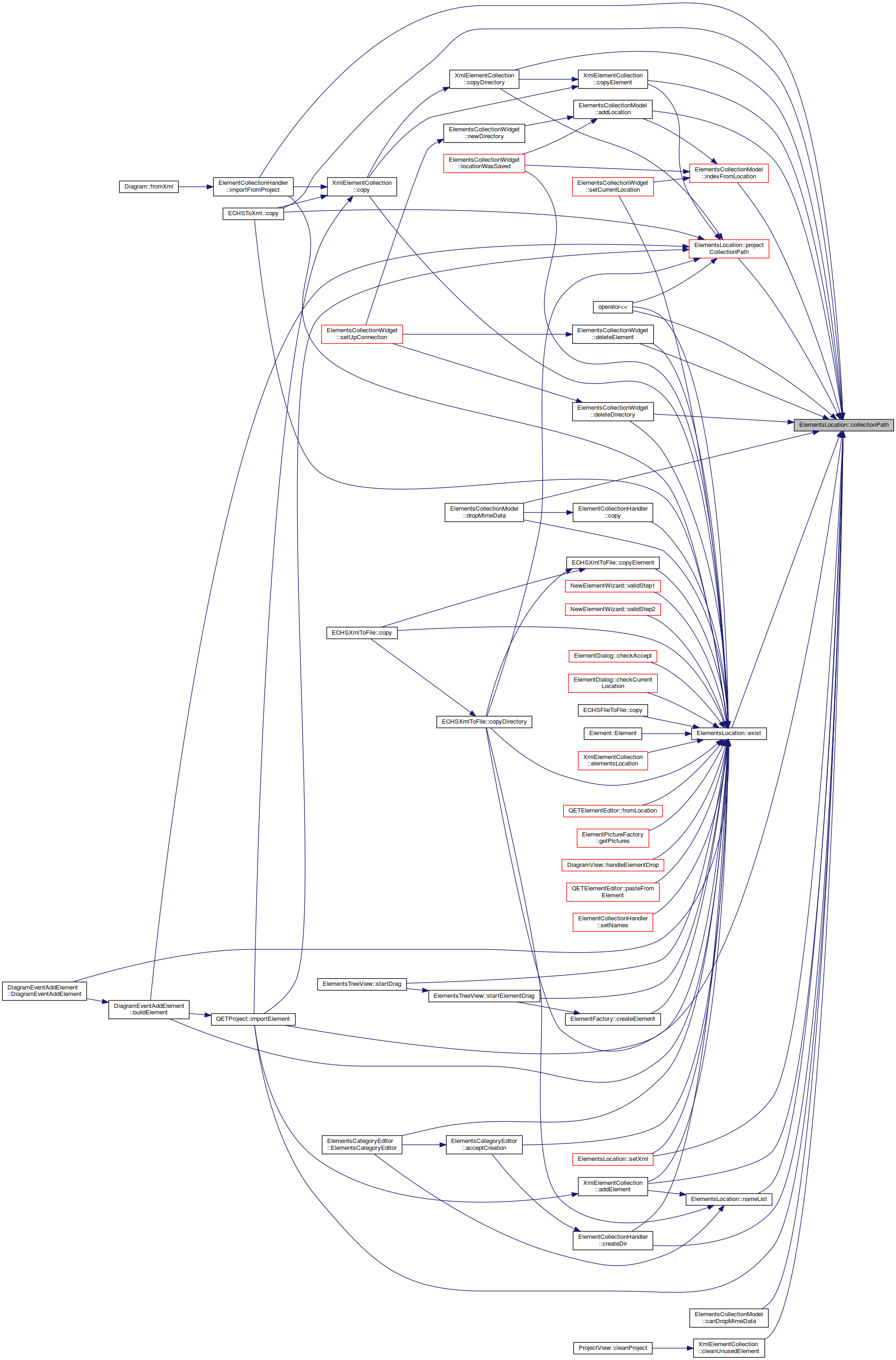
| DiagramContext ElementsLocation::elementInformations | ( | ) | const |
ElementsLocation::elementInformations.


| bool ElementsLocation::exist | ( | ) | const |

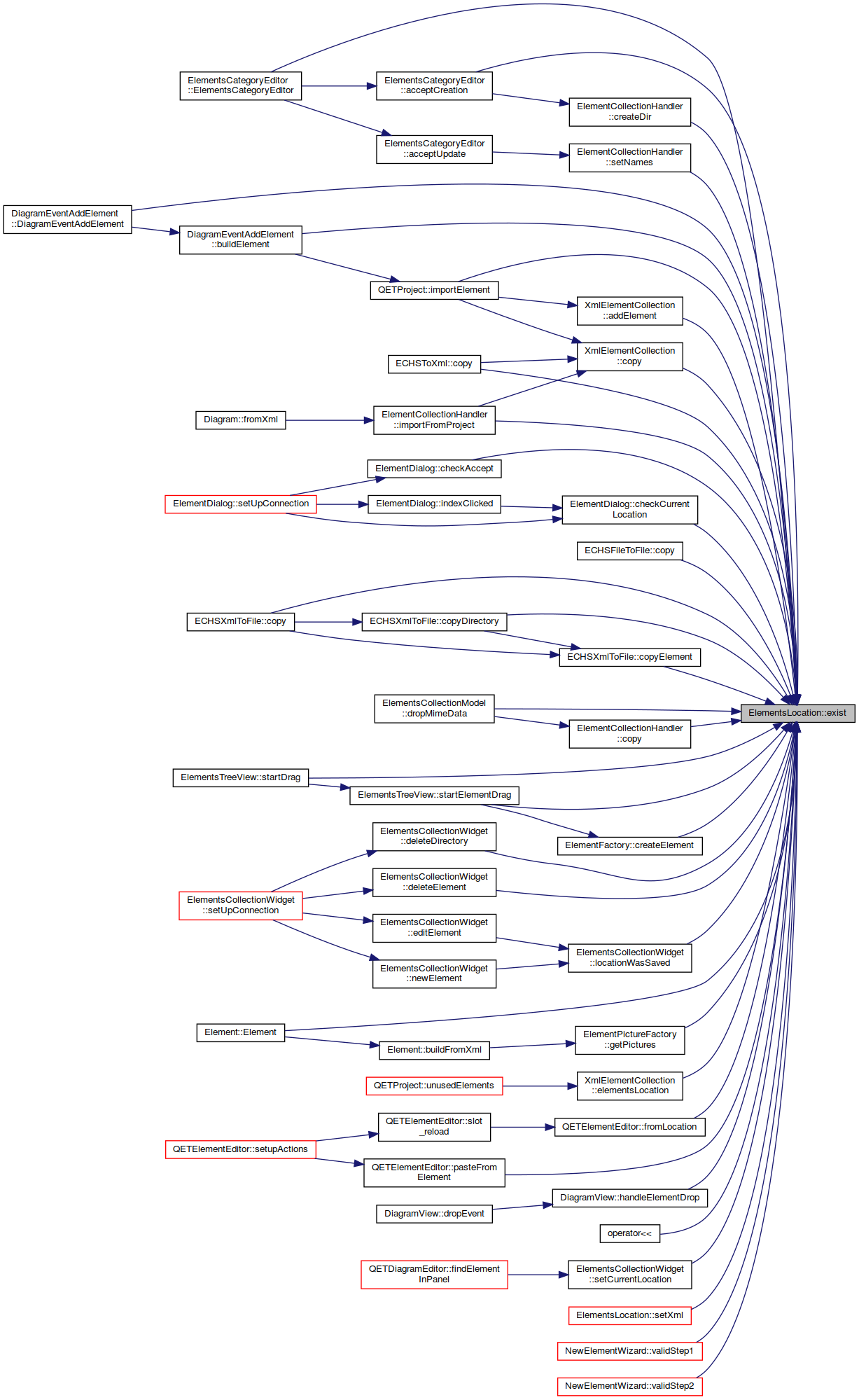
| QString ElementsLocation::fileName | ( | ) | const |
ElementLocation::fileName.
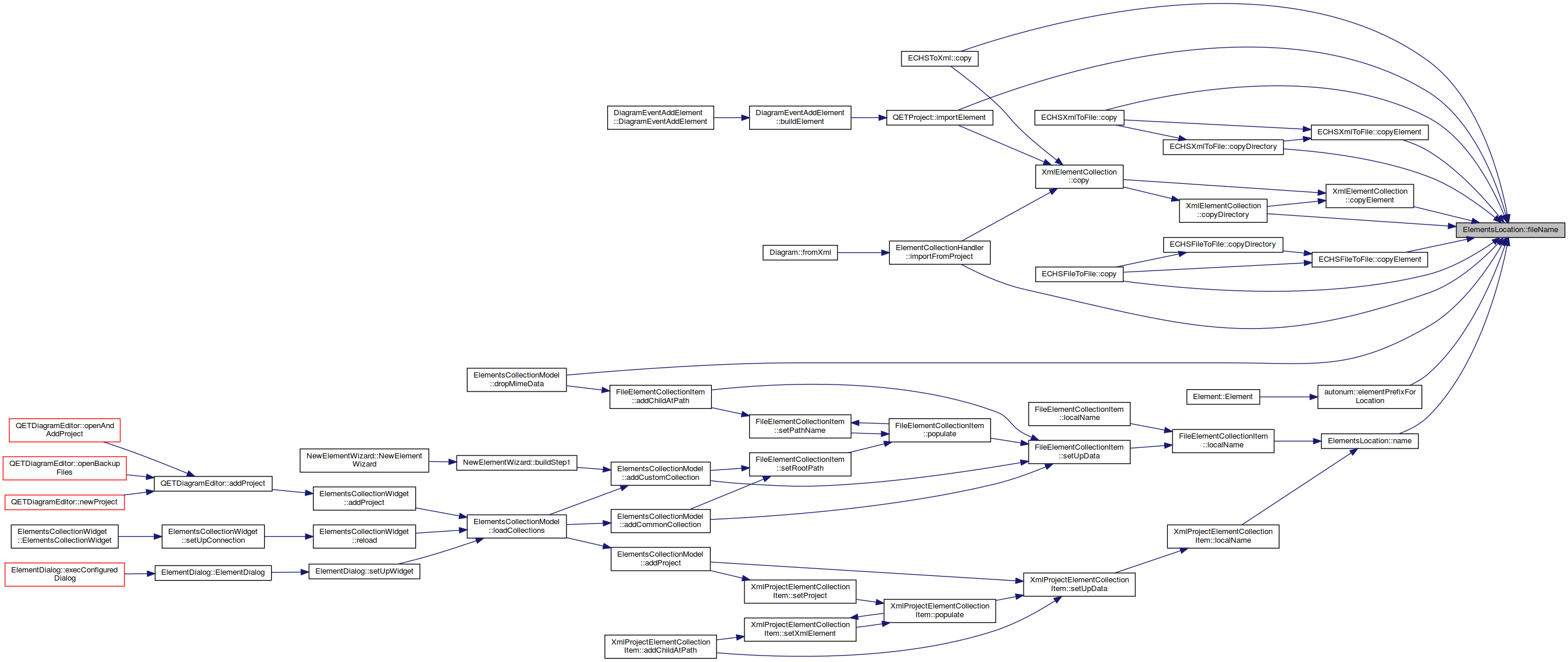
| QString ElementsLocation::fileSystemPath | ( | ) | const |
ElementsLocation::fileSystemPath.
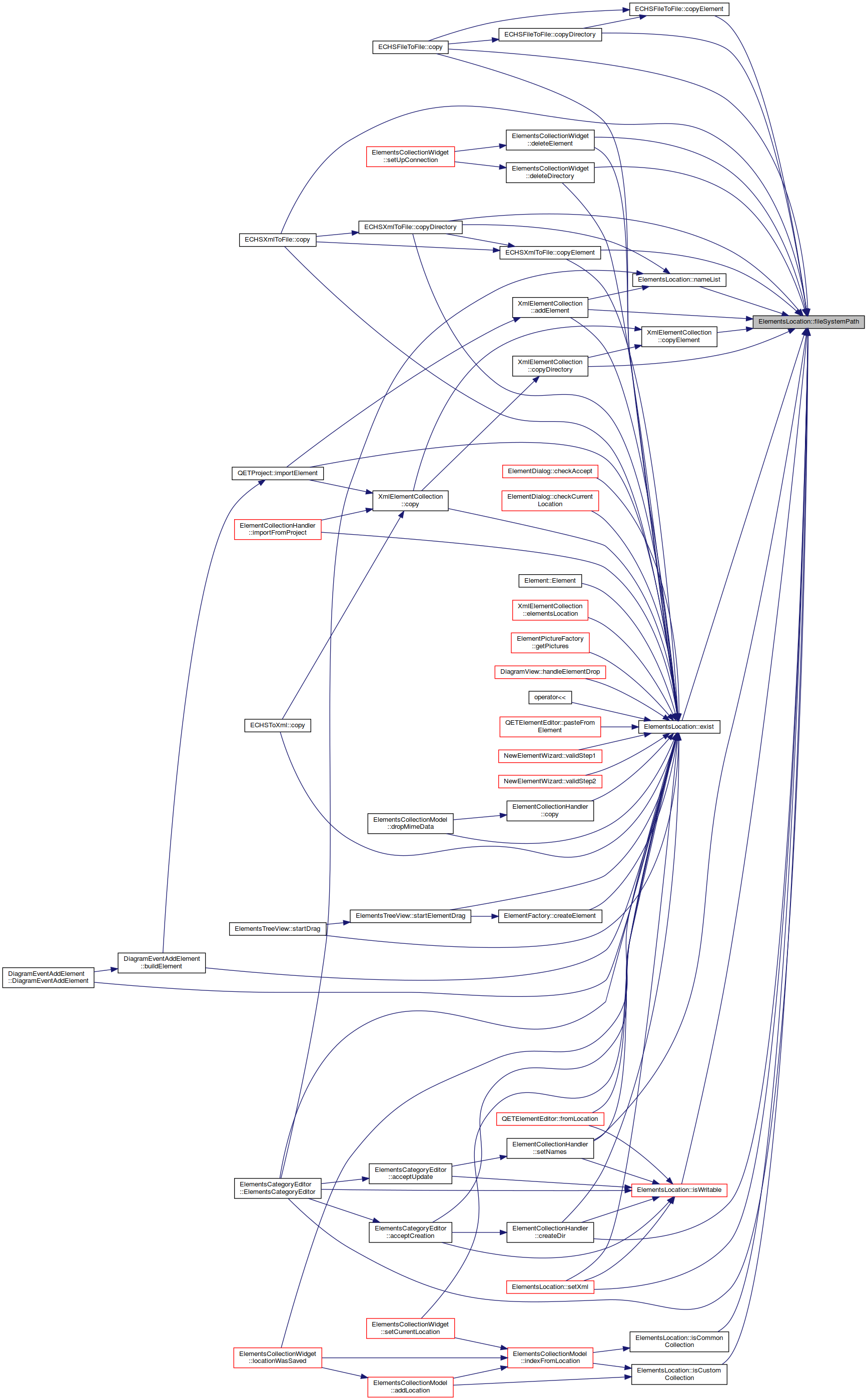
| QIcon ElementsLocation::icon | ( | ) | const |
ElementLocation::icon.


| bool ElementsLocation::isCommonCollection | ( | ) | const |
ElementsLocation::isCommonCollection.


| bool ElementsLocation::isCustomCollection | ( | ) | const |
ElementsLocation::isCustomCollection.


| bool ElementsLocation::isDirectory | ( | ) | const |
ElementsLocation::isDirectory.


| bool ElementsLocation::isElement | ( | ) | const |
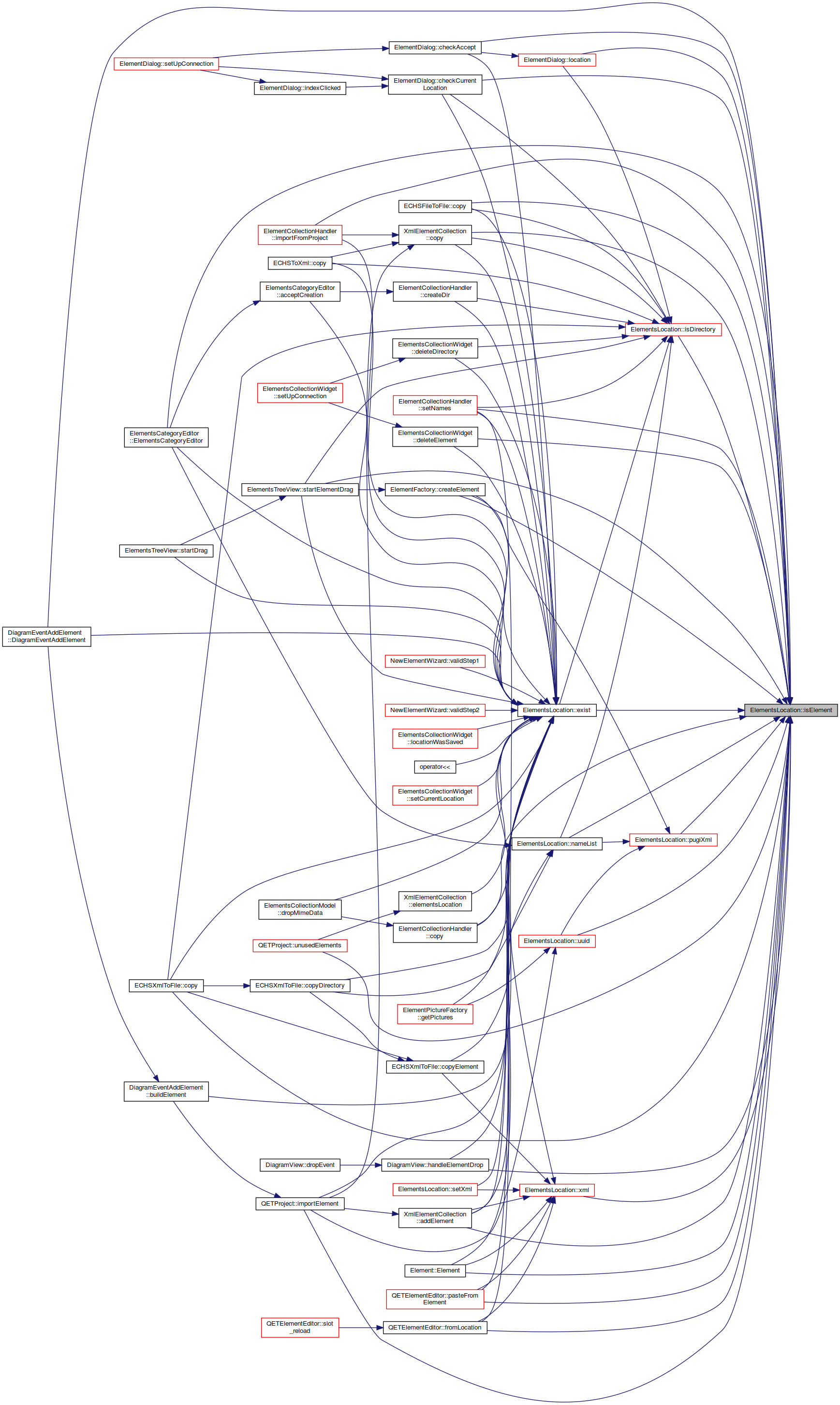
| bool ElementsLocation::isFileSystem | ( | ) | const |
| bool ElementsLocation::isNull | ( | ) | const |

| bool ElementsLocation::isProject | ( | ) | const |

| bool ElementsLocation::isWritable | ( | ) | const |


| QString ElementsLocation::name | ( | ) | const |
ElementLocation::name.


| NamesList ElementsLocation::nameList | ( | ) |
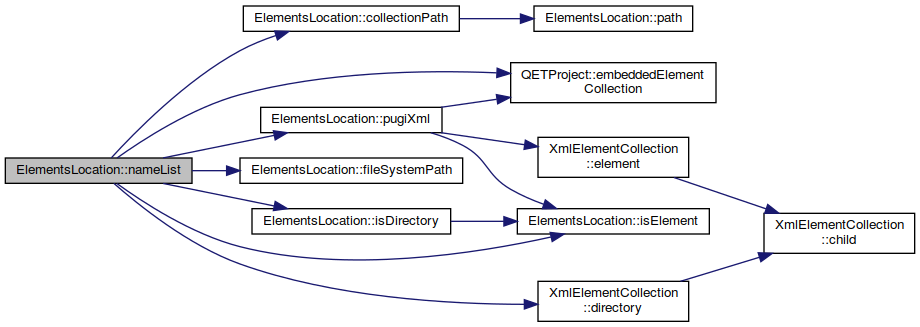

| bool ElementsLocation::operator!= | ( | const ElementsLocation & | other | ) | const |
ElementsLocation::operator != Operateur de comparaison.
| other | Autre emplacement d'element a comparer |
| ElementsLocation & ElementsLocation::operator= | ( | const ElementsLocation & | other | ) |
ElementsLocation::operator = Assignment operator.
| other | : Other item location to assign |
| bool ElementsLocation::operator== | ( | const ElementsLocation & | other | ) | const |
ElementsLocation::operator ==.
| other | : other item location to compare |
| ElementsLocation ElementsLocation::parent | ( | ) | const |


| QString ElementsLocation::path | ( | ) | const |
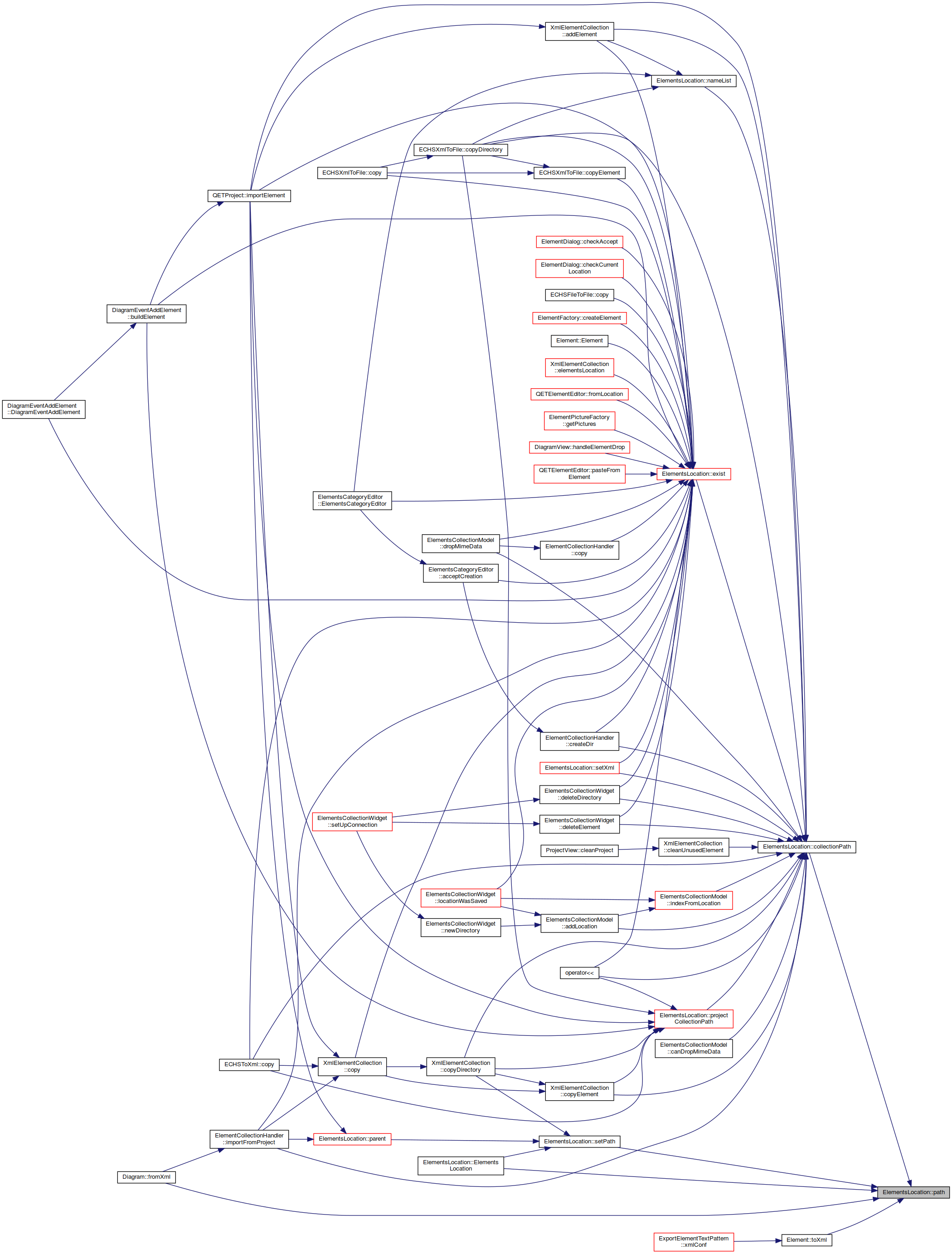
| QETProject * ElementsLocation::project | ( | ) | const |

| XmlElementCollection * ElementsLocation::projectCollection | ( | ) | const |
ElementsLocation::projectCollection.


| QString ElementsLocation::projectCollectionPath | ( | ) | const |
ElementsLocation::projectCollectionPath.


| pugi::xml_document ElementsLocation::pugiXml | ( | ) | const |

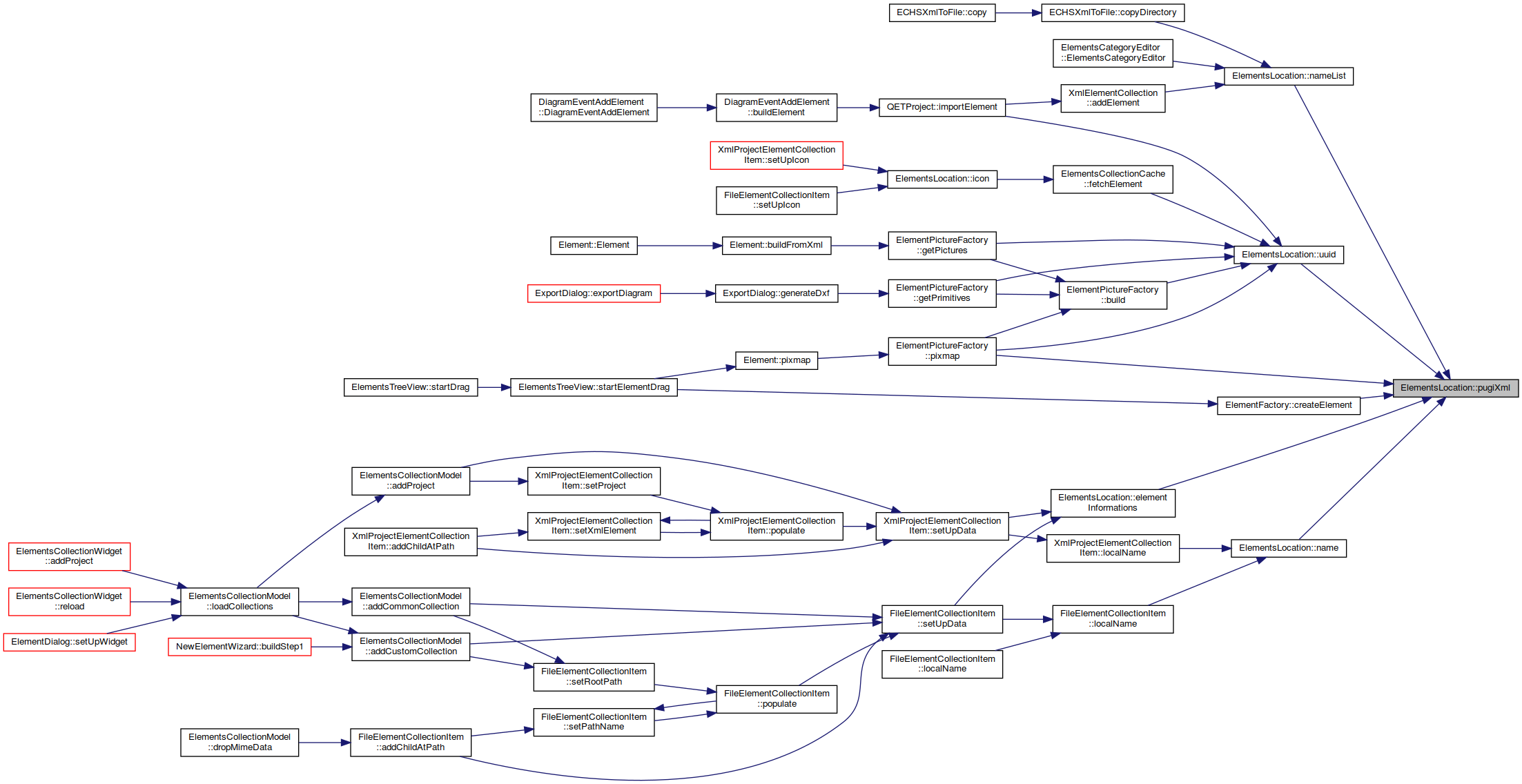
| void ElementsLocation::setPath | ( | const QString & | path | ) |
ElementsLocation::setPath Set the path of this item. The path can be relative to a collection (start by common:// , custom:// or embed://) or not.
| path |


| void ElementsLocation::setProject | ( | QETProject * | project | ) |
| project | : the new project points to this location Indicate 0 so that this location is no longer linked to a project. |

| bool ElementsLocation::setXml | ( | const QDomDocument & | xml_document | ) | const |
ElementsLocation::setXml Replace the current xml description by xml_document; The document element of xml_document must have tagname "definition" to be written This definition must be writable.
| xml_document |
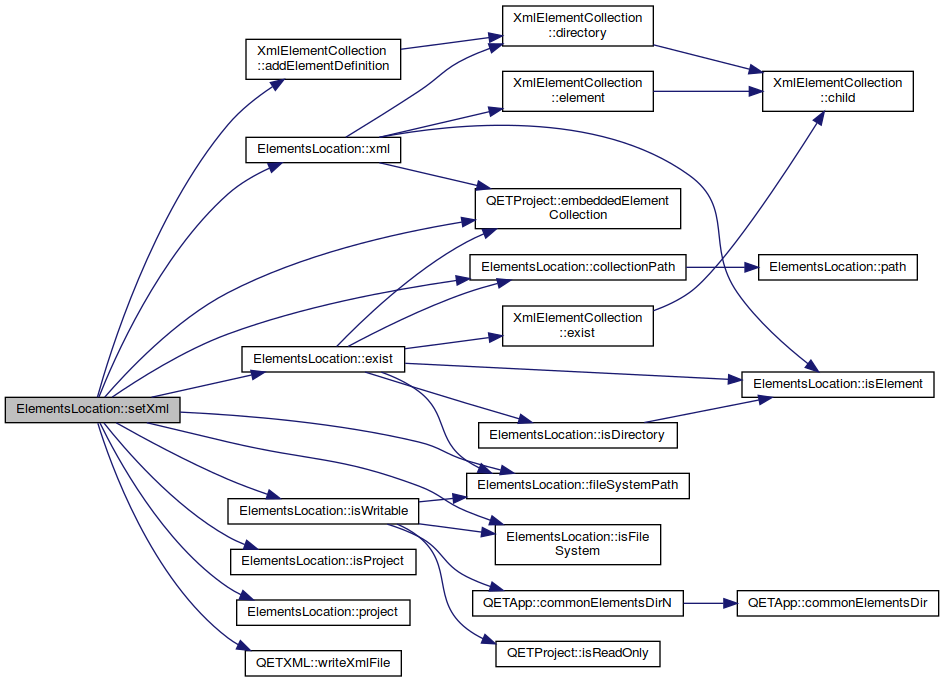

| QString ElementsLocation::toString | ( | ) | const |


| QUuid ElementsLocation::uuid | ( | ) | const |


| QDomElement ElementsLocation::xml | ( | ) | const |


|
private |
|
private |
|
private |
|
mutableprivate |
|
static |
Id of the corresponding Qt meta type.
 1.8.18
1.8.18